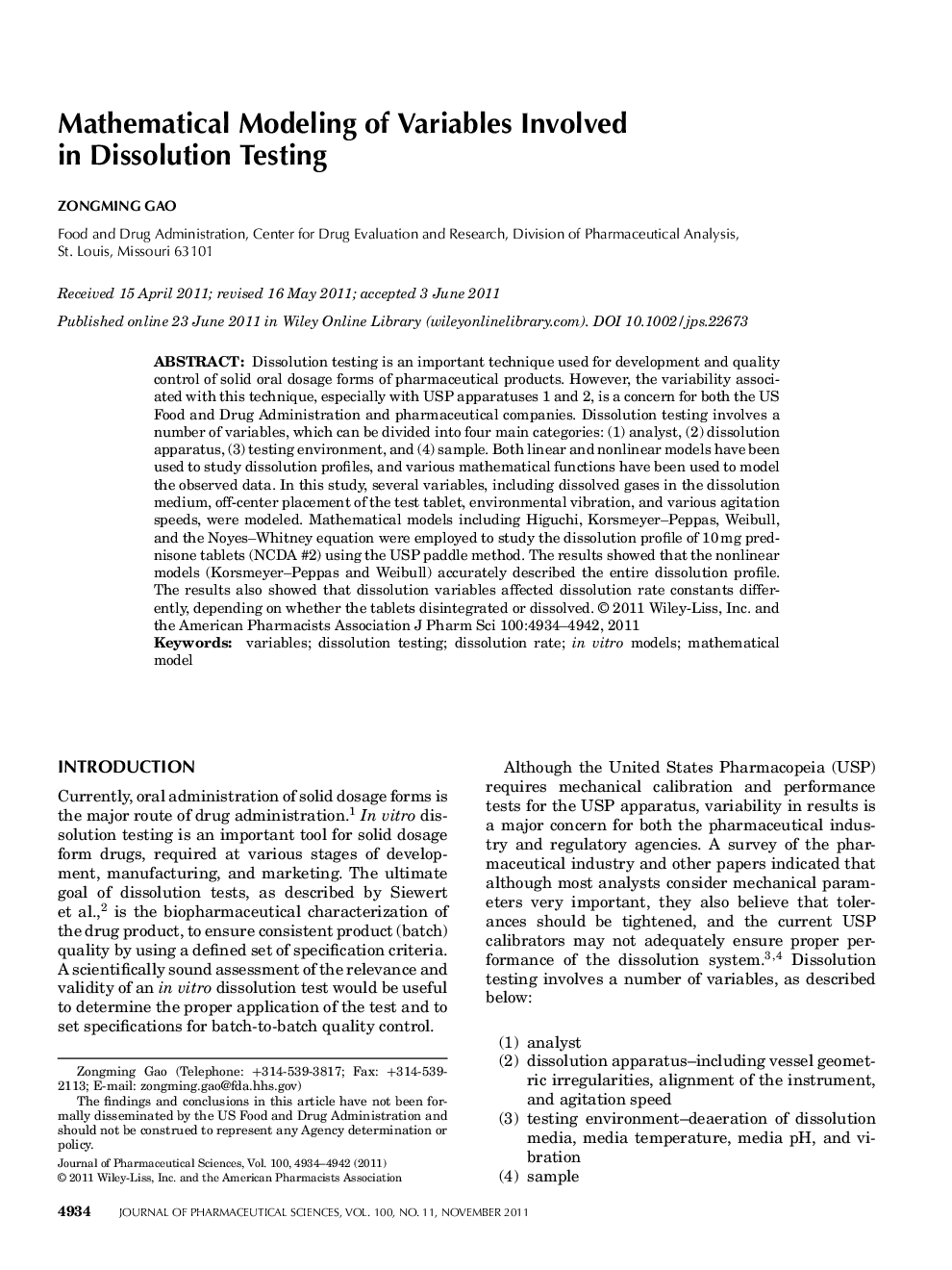| Article ID | Journal | Published Year | Pages | File Type |
|---|---|---|---|---|
| 2486192 | Journal of Pharmaceutical Sciences | 2011 | 9 Pages |
Abstract
Dissolution testing is an important technique used for development and quality control of solid oral dosage forms of pharmaceutical products. However, the variability associated with this technique, especially with USP apparatuses 1 and 2, is a concern for both the US Food and Drug Administration and pharmaceutical companies. Dissolution testing involves a number of variables, which can be divided into four main categories: (1) analyst, (2) dissolution apparatus, (3) testing environment, and (4) sample. Both linear and nonlinear models have been used to study dissolution profiles, and various mathematical functions have been used to model the observed data. In this study, several variables, including dissolved gases in the dissolution medium, offâcenter placement of the test tablet, environmental vibration, and various agitation speeds, were modeled. Mathematical models including Higuchi, Korsmeyer-Peppas, Weibull, and the Noyes-Whitney equation were employed to study the dissolution profile of 10 mg prednisone tablets (NCDA #2) using the USP paddle method. The results showed that the nonlinear models (Korsmeyer-Peppas and Weibull) accurately described the entire dissolution profile. The results also showed that dissolution variables affected dissolution rate constants differently, depending on whether the tablets disintegrated or dissolved. © 2011 WileyâLiss, Inc. and the American Pharmacists Association J Pharm Sci 100:4934-4942, 2011
Related Topics
Health Sciences
Pharmacology, Toxicology and Pharmaceutical Science
Drug Discovery
Authors
Zongming Gao,
